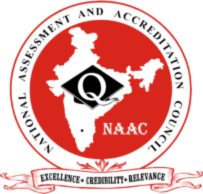
"The NATIONAL ASSESSMENT AND ACCREDITATION COUNCIL (NAAC) conducts assessment and accreditation of Higher Educational Institutions (HEI) such as colleges, universities or other recognised institutions to derive an understanding of the ‘Quality Status’ of the institution. NAAC evaluates the institutions for its conformance to the standards of quality in terms of its performance related to the educational processes and outcomes, curriculum coverage, teaching-learning processes, faculty, research, infrastructure, learning resources, organisation, governance, financial well being and student services."

Accreditation in the act certifying an educational institution or program as meeting all official formal requirements of academic excellence, facilities, curriculum, etc.
India has one of the largest and diverse education systems in the world. Privatization, widespread expansion, increased autonomy and introduction of programmes in new and emerging areas have improved access to higher education. At the same time, it has also led to widespread concern on the quality and relevance of the higher education.
To address these concerns, the National Policy on Education (NPE) and the Programme of Action (POA) established an independent National Assessment and Accreditation Council (NAAC).
Now we have been preparing all the details and we are going to submit SSR (Self Study Report) to NAAC, so that our college will be accredited soon.
| Metric No. | Description | Link |
|---|---|---|
| 2.1.1 QnM | Enrolment percentage | View |
| 2.1.2 QnM | Percentage of seats filled against seats reserved for various categories (SC, ST, OBC, Divyangjan, etc. as per applicable reservation policy during the last five years Exclusive of supernumerary seats) | View |
Key Indicator – 2.2 Student Teacher Ratio |
||
| Metric No. | Description | Link |
| 2.2.1 QnM | Student – Full time Teacher Ratio (Data for the latest completed academic year) | View |
Key Indicator – 2.3 Teaching- Learning Process |
||
| Metric No. | Description | Link |
| 2.3.1 QlM | Student centric methods, such as experiential learning, participative learning and problem solving methodologies are used for enhancing learning experiences using ICT tools Write description in a maximum of 500 words | View |
Key Indicator – 2.4 Teacher Profile and Quality |
||
| Metric No. | Description | Link |
| 2.4.1 QnM | Percentage of full-time teachers against sanctioned posts during the last five years 2.4.1.1 Number of Sanctioned posts / required positions for teaching staff/ full time teachers year wise during the last five years | View |
| 2.4.2 QnM | Percentage of full time teachers with NET/SET/SLET/ Ph. D. / D.M. / M.Ch. / D.N.B Superspeciality / D.Sc. / D.Litt. during the last five years (consider only highest degree for count) 2.4.2.1. Number of full time teachers with NET/SET/SLET/Ph. D. /D.M. / M.Ch. / D.N.B Superspeciality / D.Sc. / D.Litt. year wise during the last five years | View |
Key Indicator – 2.5 Evaluation Process and Reforms |
||
| Metric No. | Description | Link |
| 2.5.1 QlM | Mechanism of internal/ external assessment is transparent and the grievance redressal system is time- bound and efficient Write description in a maximum of 500 words | View |
Key Indicator – 2.6 Student Performance and Learning Outcome |
||
| Metric No. | Description | Link |
| 2.6.1 QlM | Programme Outcomes (POs) and Course Outcomes (COs) for all Programmes offered by the institution are stated and displayed on website. | View |
| 2.6.2 QlM | Attainment of POs and COs are evaluated Write description in a maximum of 500 words. | View |
| 2.6.3 QnM | Pass percentage of Students during last five years. (Excluding Backlog Students) | View |
Key Indicator – 2.7 Student Satisfaction Survey |
||
| Metric No. | Description | Link |
| 2.7.1 QnM | Online student satisfaction survey regarding to teaching learning process.(Online survey to be conducted) | View |